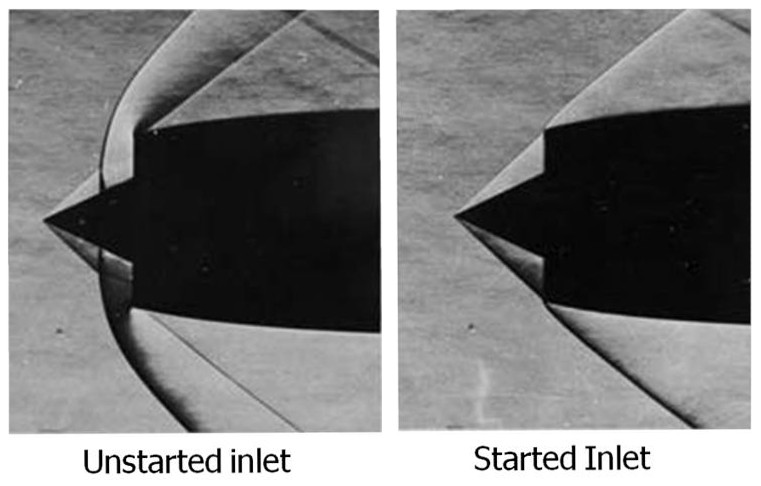Motivation¶
Sonic Frontiers is a self-directed, academically rigorous exploration into the physics and control of high-speed flight. It is motivated by my desire to build a deep and principled understanding of the aerodynamic, propulsion, and control phenomena that govern aerospace systems operating in extreme regimes. Wherever possible, the exposition is reinforced with numerical methods, practical insights, and reproducible examples.

Figure 1:Shock wave structure around a supersonic axisymmetric cone inlet. The unstarted configuration (left) shows a detached shock and reversed flow near the inlet lip, while the started configuration (right) exhibits a stable oblique shock system aligned with the inlet walls.
Source: NASA Glenn Research Center, 1955. Document C-1955-37520
This book serves as both a personal and academic archive for the following domains:
- Compressible Flow & Gas Dynamics — Shockwaves, expansion fans, nozzle flow, and wave interactions
- Supersonic and Hypersonic Aerodynamics — Pressure distributions, aerodynamic heating, and stability considerations
- Propulsion Systems — Jet engines, rocket motors, and high-speed inlets
- Flight Dynamics and Control — Nonlinear modeling, feedback design, and guidance strategies
- Numerical Methods and Simulation — CFD principles, control system simulation, and verification techniques
“The great frontier of flight lies not in how high we go, but how deeply we understand what moves us forward.”